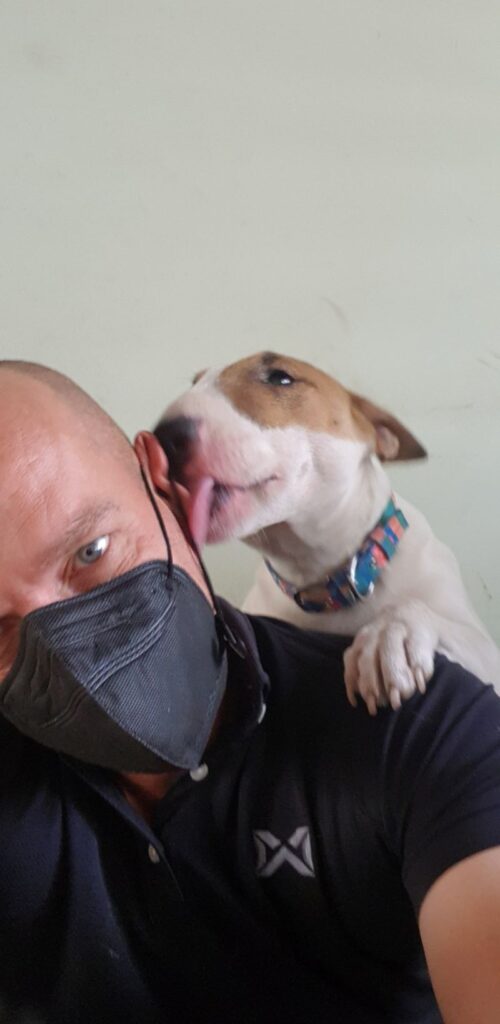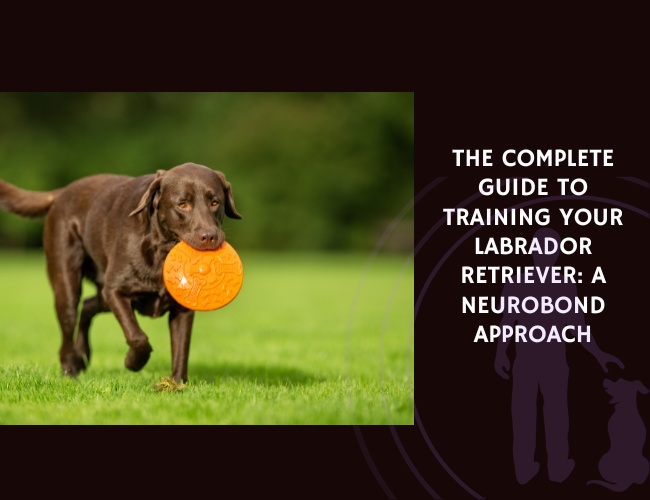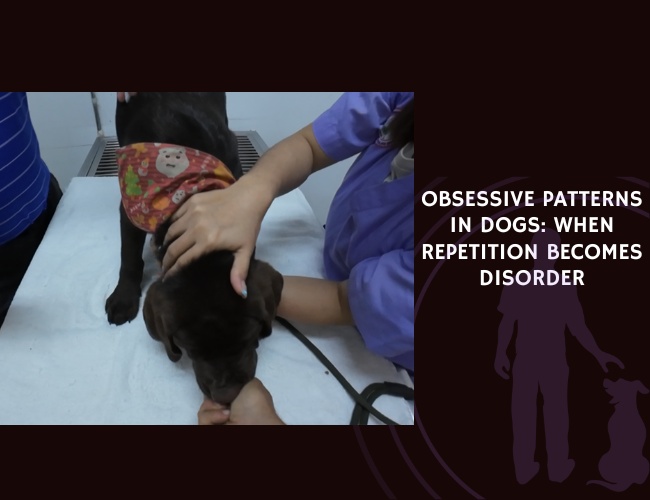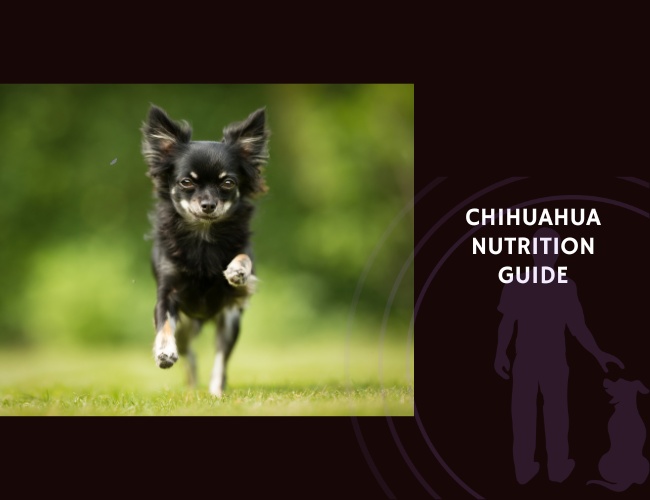Introduction to Puppy Growth and Development
Why Understanding Puppy Growth Matters
Raising a puppy is a rewarding experience, but it’s also a journey full of big changes and important milestones. Knowing what’s normal helps breeders, veterinarians, and pet owners feel confident and informed. If you’re wondering why your puppy eats so much or why they suddenly become super playful, you are not alone. Every puppy, whether a tiny toy breed or a giant companion, grows at its own unique pace.
Understanding typical development patterns matters because it helps you spot those precious milestones and also catch anything unusual. For breeders, it ensures healthy puppies for future families. Veterinarians use this knowledge to guide care and early intervention. And for pet owners, this understanding offers peace of mind during periods of swift change.
Physical and Behavioral Development: Key Milestones
Puppy development splits into physical and behavioral growth. Physically, puppies go through stages of rapid weight gain, height spurts, and muscle growth. You’ll see their baby teeth emerge, their coats fill out, and tiny paws turn sturdy. Milestones like learning to walk steadily, playful bursts of energy, and teeth coming in mark healthy progress.
On the behavioral side, puppies begin exploring their world, learning to play, socializing with littermates, and responding to their environment. These behaviors form the foundation for later training and good adult manners. Positive early experiences help shape gentle, happy adult dogs.
The Value of Growth Charts for Healthy Puppies
Growth charts are your helpful roadmap 🗺️. These tools track weight, height, and body condition over time. They work for every breed and size, giving a professional yet supportive way to measure progress. Growth charts help everyone spot growth spurts, adjust nutrition if needed, and notice any worrying changes early on. Used properly, they make raising a healthy puppy a science-backed, informative, and reassuring process.
Watching your puppy reach each milestone—and having the right tools to support them—sets them up for a full, happy life. Let us guide you through what works best for your puppy as they grow and change.
Understanding Puppy Growth Charts
What Are Puppy Growth Charts?
Puppy growth charts are informative charts designed to track a puppy’s physical progress as they develop. They help breeders, veterinarians, and pet owners monitor healthy weight gain, height increases, and body condition over time. Growth charts are a professional and supportive tool, showing the standard milestones for puppies of each breed size—so everyone can track if a puppy is on the right path. Think of them as your puppy’s personal development road map, highlighting healthy patterns from week to week.
How Growth Charts Vary by Breed Size
Not all puppies grow at the same pace! Breed size plays a big role in shaping what “normal” looks like on a growth chart.
- Toy breeds (like Chihuahuas) experience quick but small changes, often reaching adult size by nine months.
- Small and medium breeds tend to grow steadily, maturing a bit later than toys.
- Large and giant breeds (think Labradors or Great Danes) show slower, longer growth patterns, sometimes not hitting full size until 18-24 months.
The professional approach in using these charts recognises these differences, ensuring you don’t accidentally compare your toy poodle with a Great Dane!
Key Factors That Influence Growth
You might find it helpful to know that growth is not just about breed and size. Various factors shape individual puppy growth patterns:
- Genetics: Puppies inherit specific growth traits from their parents.
- Nutrition: Diet quality and feeding schedules affect healthy weight gain and musculoskeletal development.
- Environment: Exercise, home life, and playtime all influence growth.
- Healthcare: Routine veterinary care helps catch issues early.
Growth charts emphasize individualized tracking. Puppies develop at their own pace, so growth data should always be viewed through a compassionate and supportive lens, not as a strict rulebook.
Let us guide you through this journey—growth charts aren’t there to judge but to help you support your puppy’s healthiest start in life. 🌱
Moving forward, understanding normal growth patterns sets the stage for tracking physical milestones and helping your puppy thrive.
Physical Development Milestones
Understanding Weight and Height Progression
Tracking your puppy’s physical growth is both informative and rewarding. Weight and height are two main signs of healthy development. Puppies from different breed sizes grow at different rates. For example, toy breeds reach their adult size quickly—often by 8-10 months old. Large and giant breeds, however, may grow steadily for 18-24 months! Remember, there’s a wide range of normal, so comparing your puppy to breed-specific charts can help you set realistic expectations. Regular measurements—weekly for young puppies and monthly as they grow—give you a clear picture of their journey.
Body Condition Scoring (BCS): A Helpful Tool
Weight and height alone don’t always tell the full story. That’s where body condition scoring (BCS) steps in! BCS is an assessment system to help you see if your puppy is too thin, overweight, or just right. You check for a tucked waist, feel for ribs with a gentle press, and look for an hourglass shape from above. Most puppies should hover around the middle of the scale. If they’re on either end, a chat with your veterinarian is a supportive next step.
Skeletal Development and Growth Plate Closure
Beneath their fluffy coats, puppies’ skeletons are hard at work. Growth plates—soft areas at the ends of bones—allow bones to lengthen as puppies grow. These plates close at different ages depending on breed size. Toy breeds’ plates may close as early as 9 months, while giant breeds take 18 months or even longer. Until closure, extra care is needed to avoid injuries from jumping or rough play. Let us guide you through these milestones—small steps make a big difference for a growing pup! 🐾
Keeping up with regular checkups and gentle monitoring truly supports your puppy’s healthy start. This foundation will help guide every part of their lifelong journey.
Monitoring Organ and Musculoskeletal Development
Understanding how your puppy’s organs and musculoskeletal system develop is key to ensuring a healthy future. Let us guide you through what to expect during this exciting phase of puppy growth. 🐾
Key organ and bone development markers
Right from birth, your puppy’s organs—like the heart, lungs, and digestive system—go through rapid changes. Professional veterinary exams play an important role here, as they can detect if internal organ development is progressing well or if there might be underlying issues. When you bring your pup in for routine checkups, veterinarians often check the heart, lungs, belly, and joints to make sure everything is working as expected. Consistency in these exams provides peace of mind and helps you catch problems early.
Your puppy’s skeletal system is also quickly developing, with bones growing longer and stronger each week. Radiographic imaging (that is, X-rays) can help determine how the growth plates—areas of new bone—are maturing. In smaller breeds, growth plates may close as early as 8-10 months, while large-breed puppies might not see full skeletal maturity until 18-24 months. It’s important to know this timeline because puppies with open growth plates should avoid rough play or high-impact exercise.
The teeth timeline
Dental development is another key milestone. Puppy teeth typically start to erupt at about three weeks old, with all baby teeth usually present by eight weeks. The process of losing baby teeth and growing adult teeth often begins around three to four months. If you notice persistent baby teeth or abnormal mouth development, it may be time for a veterinary check.
Growing coordination and ability
Watching your puppy master balance and movement is truly a joy! In the early weeks, expect clumsy wobbles—this is normal as nerves and muscles strengthen. Coordination improves noticeably from week to week, especially as puppies begin to walk, run, and play with increasing control. Simple daily activities, like gentle play and supervised exploration, go a long way in supporting this development.
By staying attentive to these scientific and observable milestones, you play a supportive role in your puppy’s healthy development. Each step sets the stage for the next level of growth, both inside and out.

Behavioral and Neurological Development
Understanding Puppy Socialization
Let us guide you through one of the most transformative times in a puppy’s life: the socialization period. From about 3 to 14 weeks old, puppies are like sponges, soaking up every new experience. This “critical socialization period” is when puppies learn how to interact with people, other dogs, and the world. Supportive environments filled with gentle handling, positive encounters, and new sights and sounds are foundational for confidence and calmness later in life. Missing out on proper socialization can lead to shyness or fearfulness, so it’s extra important!
Navigating the Fear Imprint Phase
Did you know? Around 8 to 16 weeks of age, puppies experience what experts call a “fear imprint” period. During this time, negative experiences can leave lasting impressions. If your puppy seems suddenly startled or hesitant—don’t worry, this is normal! Respond with patience and encouragement instead of scolding. Careful exposure to new things in a positive, controlled way will help prevent lingering fears. Informative and professional support during this phase can make a big difference in your puppy’s future behavior.
Measuring Behavioral Milestones
Tracking behavioral milestones gives breeders, veterinarians, and pet owners meaningful insights into neurological growth. Standardized assessment tools look at playful interaction, curiosity, problem-solving, and responsiveness to humans. Some common signs of progress include:
- Consistently playing with toys
- Responding to simple commands
- Exploring new environments with interest
- Interacting confidently with humans and littermates
If you ever feel unsure or notice significant delays, reach out to a veterinarian for professional advice and support.
Understanding these behavioral stages adds another layer to caring for your puppy’s healthy development. As physical growth continues, paying attention to these signs sets your puppy up for lifelong confidence and well-being. 🐾
Adolescence in Puppies
When and How Adolescent Changes Begin
Adolescence in puppies can seem a little wild! This phase usually begins as early as 5-6 months in toy and small breeds, while larger breeds may enter adolescence closer to 9-12 months. You might notice your playful pup acting differently during this time. Breed size matters—a Chihuahua may mature fast, while a Great Dane takes much longer to settle into adulthood.
Common Behavioral Changes
Adolescent puppies are known for energy bursts, curiosity, and sometimes testing boundaries. It’s a bit like the “teenage” phase in humans. Here are some things you might see:
- Increased independence, such as ignoring recall commands or exploring more boldly.
- Surges in energy, with zoomies and rougher play.
- New behaviors like marking, barking more, or even chewing on things they previously ignored.
- Fluctuating confidence, including sudden shyness or nervousness around new things.
You might find it helpful to know that these shifts are normal milestones on the road to adulthood. This is also when some common challenges—like stubbornness or selective listening—tend to pop up.
Supportive Strategies for Puppy Adolescence
Adolescence takes extra patience and compassion from pet owners, breeders, and veterinarians. Here are some professional, supportive tips for getting through this stage:
- Stick to a regular routine—keep walks, meals, and playtimes predictable.
- Continue positive reinforcement training, rewarding good choices.
- Offer safe outlets for chewing and digging.
- Give your puppy chances to socialize with friendly dogs and people.
- Remember, setbacks (like accidents or ignoring cues) are part of normal growth.
Let us guide you through this with kindness. Growth charts and behavioral tracking stay useful at this stage! They can help you see if behaviors or physical changes seem off-pattern for your puppy’s breed or age. If you notice unusual shifts, your veterinarian is a great partner for support and advice.
With guidance and consistency, your energetic “teen” will move closer to becoming a happy, confident adult dog.
Growth. Tracked. Understood.
Puppies grow fast—really fast.
But not all in the same way. Growth charts help decode what’s normal for your dog’s breed and age.
Not just numbers. Clarity.
From weight trends to body condition scores, charting development brings peace of mind and early detection of issues.



Your puppy’s personal roadmap.
Track milestones. Spot red flags. Support every stage—scientifically, professionally, and with heart.
Toilet Training and Independence Development
Developing Bladder and Bowel Control
One of the first big steps for puppy development is learning when and where to go potty. Most puppies start to develop basic bladder and bowel control at around three to four weeks old, but true control often comes later, closer to twelve to sixteen weeks. During this period, accidents are common, so patience and consistency are key. Puppies need regular opportunities to go outside—typically after waking up, eating, and playing. You might find it helpful to know that establishing a routine, such as scheduled potty breaks every two to three hours, supports this process and reduces stress for both you and your pup. 🐾
Benchmarks for Becoming Independent
As puppies mature, their need for constant care from their mother and littermates shifts. You’ll notice increasing signs of independence starting around eight weeks old. These include:
- Exploring away from the nest or bed
- Eating on their own
- Playing solo or with new objects
- Sleeping separately from littermates
By twelve weeks, most puppies can be comfortably left alone for brief periods and show curiosity in new environments. Let us guide you through this phase by recommending gradual alone time, confidence-building activities, and plenty of positive reinforcement.
Supportive Strategies for Success
Patience and encouragement are your best tools. Here are a few professional, informative, and supportive tips:
- Stick to a consistent schedule for feeding and bathroom breaks.
- Use positive reinforcement—reward with treats or gentle praise after successful potty trips.
- Limit free access to the house until toilet training is reliable.
- Provide safe, contained spaces like a crate or puppy pen to prevent accidents and foster independence.
- Gradually increase time apart to ease separation anxiety.
Supporting both toilet training and independence development lays a healthy foundation for your puppy’s next stages of growth, ensuring they feel secure and confident as they continue to mature.
Nutritional Factors Affecting Growth
The role of diet in healthy puppy development
Understanding your puppy’s nutritional needs is key to smooth and healthy growth. Puppies are not just small dogs—they require a different balance of nutrients, energy, and minerals for their unique development patterns. Let us guide you through what matters most for your growing pup.
Balanced diet quality and composition
A puppy’s diet needs to be rich in protein, fat, vitamins, and minerals. High-quality puppy food gives the right foundation for building muscles, bones, organs, and a shiny coat. You might find it helpful to know that reputable foods often follow nutrition standards set by organizations such as AAFCO (Association of American Feed Control Officials), making shopping a bit less confusing. Skipping out on proper nutrients during this stage can result in poor growth or even long-term health issues.
Caloric requirements through the stages
As puppies grow, their calorie needs change. Young puppies burn lots of energy playing and growing, so they generally need more calories per kilogram compared to adult dogs. Smaller breeds may mature faster, needing less calorie-dense food as they reach adulthood, while giant breeds grow slowly and steadily, requiring careful calorie management to avoid growing too fast (which can harm bones and joints). Regular check-ins and weight tracking help adjust feeding to match these changing needs.
Calcium:phosphorus balance for bones
The balance of calcium and phosphorus is especially important during rapid growth. Too much or too little can cause skeletal problems, especially in large and giant breeds. Most commercial puppy foods offer the right ratio, but giving extra supplements without veterinary advice can be risky for developing puppies.
Good nutrition is just the start. The next step is seeing how genes and daily life shape your puppy’s unique growth journey. 🦴🍖

Genetic and Environmental Influences
Breed-Specific Genetic Factors
Every puppy’s growth journey starts with its genetic blueprint. 🧬 Breed plays a key role in setting the limits for adult size, shape, and certain behavioral tendencies. For example, a Great Dane’s genetics tell it to grow much larger and for a longer time than a Chihuahua. Even within the same breed, individual dogs can develop at different speeds—so growth charts should always be seen as helpful guides, not strict rules. Breed-specific growth expectations help breeders, veterinarians, and owners recognize what’s typical for each puppy, making care more informative and supportive.
Exercise and Activity Levels
Just like humans, puppies benefit from the right amount of exercise as they grow. Regular, age-appropriate physical activity helps build strong bones, muscles, and healthy organs. But it’s important to strike a balance—too little exercise may weaken muscles and delay development, while too much, especially in rapidly growing large breeds, can put stress on growing joints and lead to injuries or skeletal problems. Let us guide you through choosing gentle, supervised play and walks, tailored to your puppy’s developmental stage.
Effects of Spay/Neuter Timing
Did you know the timing of spaying or neutering can influence a puppy’s physical development? When performed too early, these procedures can delay growth plate closure, sometimes leading to taller adult dogs and changes in bone structure. This is especially true in large and giant breeds, where joint health is a big concern. You might find it helpful to know that many professionals now recommend timing these surgeries based on breed and growth stage, rather than a one-size-fits-all approach.
Understanding both genetic makeup and daily environment is crucial for helping puppies achieve healthy, confident adulthood. This scientific approach supports veterinarians, breeders, and pet parents in making the best decisions every step of the way.
Identifying Abnormal Growth Patterns
Recognizing Physical Development Red Flags
Understanding what’s “normal” in puppy growth helps everyone—from breeders to pet owners—spot issues early. But how do you know if your puppy’s growth is off track? Start by checking their weight and height against established breed charts. Sudden weight loss, stunted growth, or an unusual increase in size may signal a health concern. A consistently low or high body condition scoring (BCS) could suggest malnutrition or overfeeding.
Look for delays in physical milestones too. For example, if your puppy hasn’t started teething by 3-4 weeks or shows poor coordination beyond the normal clumsy phase, it’s time for a thorough check. Keep an eye out for bowed legs, swollen joints, or trouble walking, which might point to underlying musculoskeletal problems.
Spotting Behavioral Concerns
Informative and supportive monitoring isn’t only about size and shape; behavior matters too! Is your puppy overly withdrawn, fearful beyond the “normal” fear imprint period (usually 8-16 weeks), or lagging in socialization? Puppies should become more curious and responsive over time. Behavior like persistent aggression, continuous shyness, or extreme reactivity could highlight developmental challenges that need professional attention.
Consistent trouble with toilet training after the typical learning period, or a lack of independence from the litter, might also raise questions. As always, trust your instincts—if something feels “off,” it probably deserves a closer look.
Knowing When to Seek Veterinary Advice
If you notice warning signs—such as failure to gain weight, odd limb positions, or marked behavioral changes—reach out to your veterinarian. Timely checkups help diagnose issues like growth disorders, nutritional deficiencies, or neurological conditions before they become serious. Don’t hesitate; early intervention is always more effective and compassionate.
With observation, patience, and professional support, you can help your puppy thrive. Let us guide you through practical ways to use growth charts to keep your furry friend on the right path.
Practical Applications of Growth Charts
Making Growth Charts Work for You
Let us guide you through the real-world ways to use puppy growth charts at home. Keeping track of your puppy’s weight and body condition isn’t just informative—it helps you keep their development on the right path and spot any issues early. Here’s how to make your puppy’s growth chart a central tool in raising a healthy, happy companion.
Guidelines for Weight Tracking
You might find it helpful to know that weighing your puppy weekly until about 6 months old is recommended. After that, monthly weigh-ins are fine. Always use the same scale, and record the numbers in your chart right away. If your puppy is restless, try offering treats for distraction—just a bit, to keep weight data accurate!
Body Condition Scoring Made Easy
Body Condition Scoring (BCS) is a supportive, professional tool to check if your puppy is too thin, too heavy, or just right. In a simple five-point scoring system:
- A score of 3 means ideal, with ribs easily felt but not seen and a visible waist behind the ribs.
- Scores lower or higher could mean your puppy is underweight or overweight.
At home, gently run your fingers along their rib cage—can you feel their ribs easily? Are their hips and waistline visible from above? These checkpoints keep you informed without needing special equipment.
Interpreting Growth Data
Not every puppy hits milestones at the same time, even within the same breed. Use the chart as a supportive guide, but look for patterns—steady, gradual weight gain and a BCS around 3 are both positive signs. Rapid spikes, plateaus, or drops may be red flags and signal a need for a veterinary check-up.
Monitoring and responding to these trends promotes a professional and compassionate approach to your puppy’s care, ensuring their development stays on a healthy course. 🐾
Conclusion: Supporting Healthy Puppy Development
Key Milestones to Celebrate
Supporting your puppy’s healthy development means looking for both the big leaps and the small wins. From those early days, you’ll notice physical changes, like steady weight gain and the eruption of tiny teeth. As weeks pass, coordination improves—suddenly your pup is running, tumbling, and exploring with more confidence. These markers show healthy musculoskeletal and organ progress, which veterinarians often check during appointments.
Behaviorally, social skills blossom between 3-14 weeks. Expect bursts of playfulness, curiosity, and the start of social bonds with people and other dogs. Watch for the fear imprint phase (8-16 weeks), an informative and significant period where experiences shape future temperament. Regular check-ins and gentle exposures help navigate this time.
Individual Growth Expectations: Every Puppy Is Unique
Every puppy follows their own growth journey. Genetics, breed size, environment, food quality, and even daily routine play a part. For example, toy breeds mature faster, closing growth plates around 8-10 months, while large and giant breeds take up to 24 months. This is where staying supportive and compassionate matters—avoid comparing your puppy’s growth to others, as normal can look very different based on breed and genetics.
Growth charts and body condition scoring give you informative, professional guidance, but remember they’re guides—not rules. If you notice steady weight gain, bright eyes, and playful energy levels, you’re likely on the right track 🐾.
Tools and Resources for Ongoing Monitoring
Let us guide you through some practical steps:
- Weigh your puppy weekly until about 6 months, then monthly.
- Use body condition scoring (BCS) to track body shape alongside weight.
- Schedule routine veterinary visits for expert, supportive feedback.
- Keep a simple journal or app to track behavioral achievements like learning new commands, socialization, and independence milestones.
If growth deviates from expectations, consult your veterinarian for professional advice. They can address concerns about weight, development, or behavioral changes. Nurturing a puppy isn’t always easy—but by combining science, compassion, and regular monitoring, you give your pup the best start possible.









